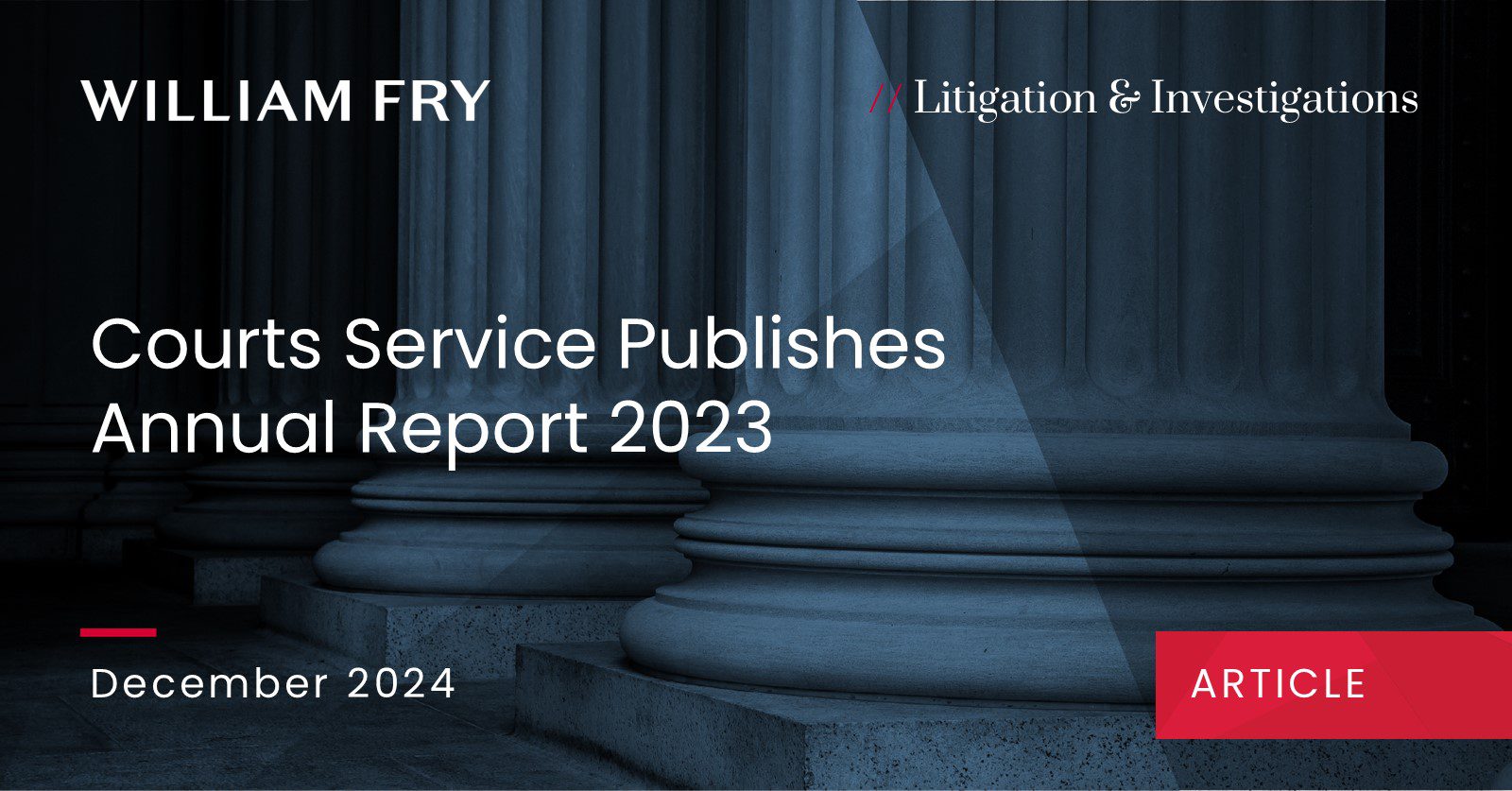The Annual Report 2023 (Report) was published by the Courts Service in September 2024. It highlights and provides an overview of the work and key developments in the courts during 2023.
Highlights from the Report include:
- New civil cases across all courts increased to almost 180,000 from 170,000 in 2022.
- Increase of 8% in new cases in the High Court in 2023 from 2022.
- Large increase in injunctions sought in the High Court Chancery list up to 326 from 188 in 2022.
- Large drop in breach of contract cases, down to 336 from 1,458 in 2022.
- Recovery of debt cases increased to 20,492 up from 17,291 in 2022.
- Strategic Infrastructure cases in 2023 increased from 85 in 2022 to 108 in 2023.
- The Supreme Court saw a 10% increase in the number of applications for leave to appeal filed when compared to 2022. In addition, there has been a 9% increase in the number of applications determined from 2022.
- The Court of Appeal had 325 new civil cases appeals and dealt with 368 in 2023.
The Report also sets out further helpful statistics that address:
Waiting Times
Supreme Court
- The average length of time from the issue of an Application for Leave to the determination of such an application was 17 weeks in 2023, down from 18 in 2022.
High Court
- Commercial List: there is no wait time on an application for liberty to enter the list.
- Insolvency: there is no wait time from the issue of a petition to the first return date in an application to appoint an examiner. However, there is a two-week wait in the case of applications to wind up a company, from the date of issuing the petition to the first return date. For other corporate applications, such as the restriction of directors, the wait is four weeks from the issuing of the motion to the first return date.
- Judicial review: the application for leave wait time is six weeks to make an ex-parte application. Post-leave, the wait time is 9 weeks.
Applications for Leave to Appeal Generally
- 2023 saw an increase of 10% in the number of applications for leave filed in the Supreme Court when compared to 2022. In addition, there has been a 9% increase in the number of applications determined.
- 160 applications for leave to appeal were brought to the Supreme Court in 2023, an increase from the 145 applications brought in 2022.
Written Judgments
- The Supreme Court delivered 61 reserved judgments in 2023, a decrease from 80 delivered in 2022.
- The Court of Appeal delivered 337 written judgements in 2024, an increase from 315 delivered in 2022.
- The High Court delivered 691 written judgements in 2023, a decrease from 738 in 2022.
Legislative Provisions – Courts and Civil Law (Miscellaneous Provisions) Act 2023 (2023 Act)
The 2023 Act, which was signed into law on 4 July 2023, contains a range of provisions relating to the courts and the Courts Service. Key provisions include an amendment of the Data Protection Act 2018 giving the District Court jurisdiction to hear and determine data protection actions, similar to the Circuit Court and High Court. In addition, the Court of Appeal can now hear and determine certain appeals by way of one judge sitting alone. Further, Section 115 of the 2023 Act amends the Courts (Supplemental Provisions) Act 1961by providing that a court can make a determination as to costs without an oral hearing.
Revised Practice Directions
When High Court Practice Direction 119 came into effect, the Commercial Planning and Environmental List was established which resulted in the removal of cases that would have previously commenced in the Commercial List. The number and nature of cases listed in the Commercial Court changed again on 11 December 2023 with High Court Practice Direction 124. This practice direction codified matters to be listed in the Planning and Environment List and has had an effect on the Commercial List.
Conclusion
In welcome news for litigants, while the number of cases grows, the Courts’ efficiency is growing, too. As noted by the Chief Justice, O’Donnell CJ, the Report shows the progress made in dealing with the challenges associated with a post-pandemic era. It emphasises the ongoing efforts to improve access to justice and drive positive changes for court users through digital innovation.
For any more information, please contact Deirdre O’Donovan, Joanne Ryan or your usual William Fry contact.
Contributed by Nickolas Dergach.



